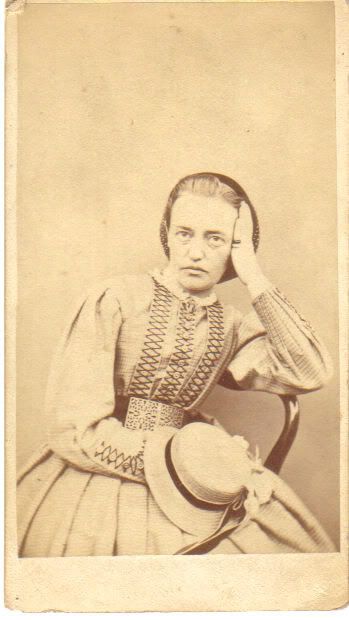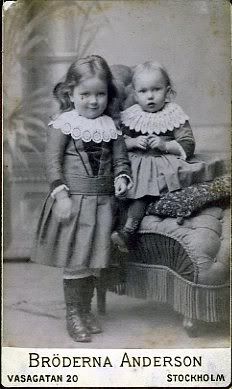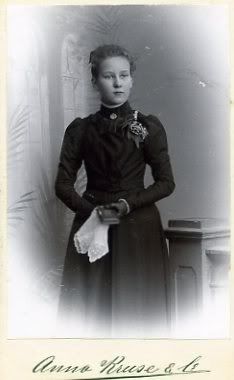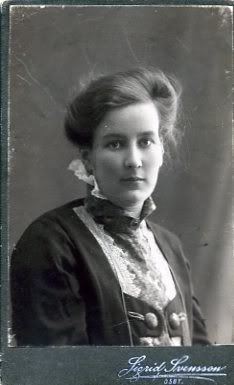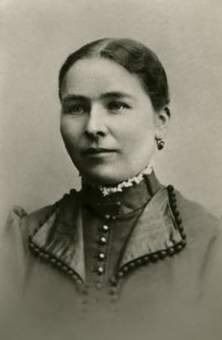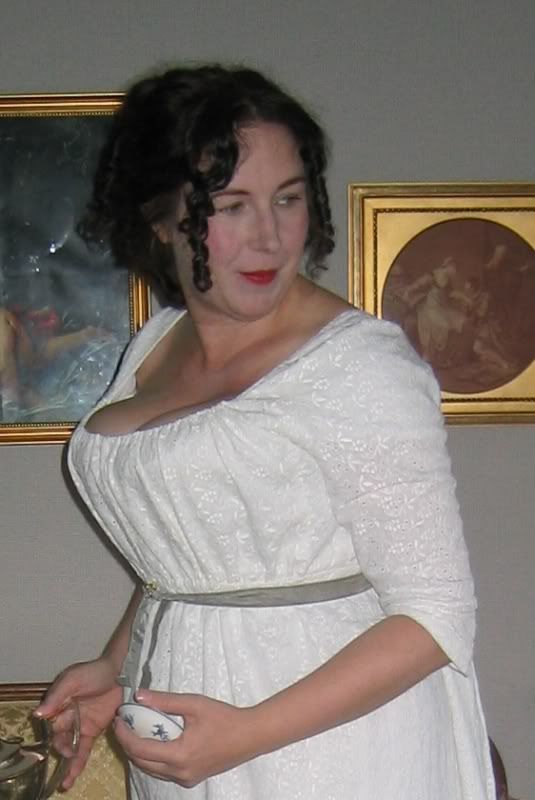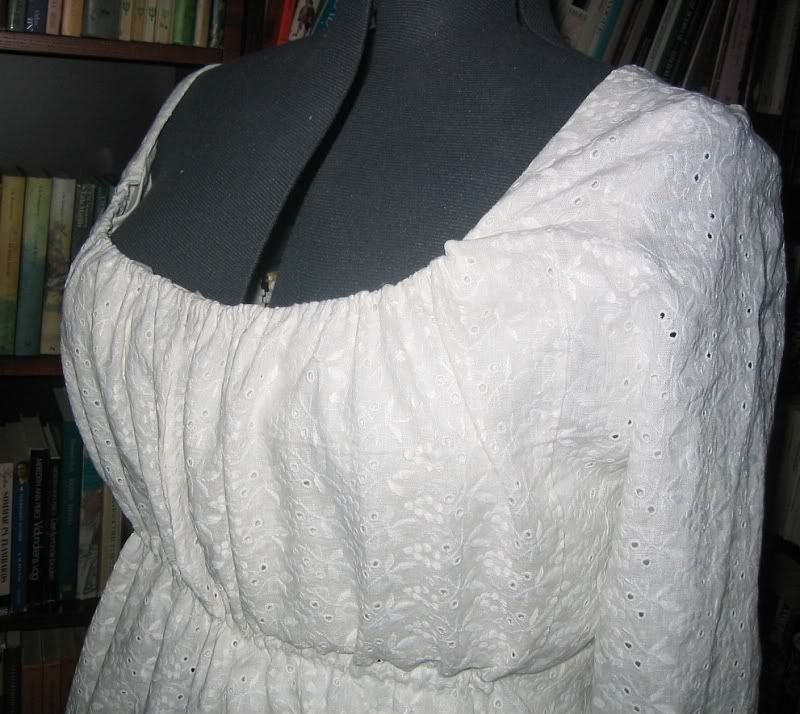I’m starting anew project, or perhaps I should say that I re-start it. I bought the fabric for it several years ago, did the mock-up for the bodice and completely lost steam. I’m going to make Gustaf III national gown, the common version.
Background
Gustaf III was king of Sweden 1771-1792. He was a rather interesting personality and definitely a control freak- he wanted to have his say in everything. When most countries that saw a revolution in the 18th century did so to promote democracy, Gustaf III had a revolution and re-established his total sovereignty. But he did promote commoners in many aspects and when he was shot in 1792, it was a nobleman who held the gun. Gustaf III was a man of many interest, among them history, music and theatre and it’s mainly because of him that Sweden has such a nice collection of historical clothes.
He also had an interest in clothes and in 1778 came a clothing reform for the upper classes.
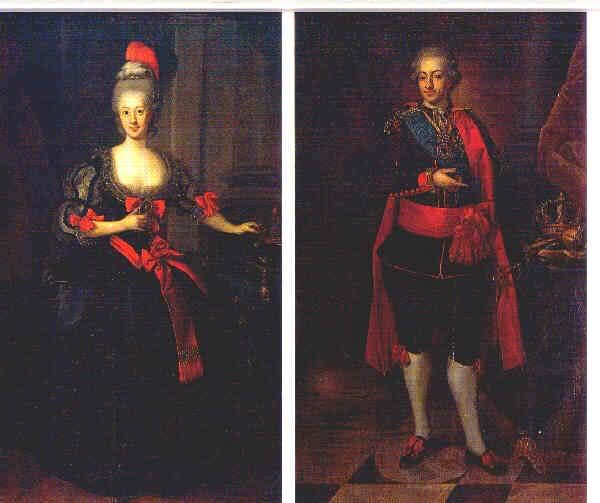
The idea had to do with economy, but it also connected with the idea of national pride, an idea that the 19th century evolved. The national suit lent many featured from former fashion. The men’s suit consisted of a short jacket, waistcoat, breeches and a short cloak. For men of the court it was black with red details for everyday wear and light blue with white details for gala. It became a quite popular, an 18th century equivalent of the 3 piece suit. You knew you were always right in a national suit. Men not at court could wear it in any colour, and several have been preserved. Gustaf III himself seems to have preferred it and about ¾ of his suits were of the national cut, at the time of his death.
The ladies, however, seem not to have liked their gown. It consisted of a petticoat, worn over pocket hoops, a sleeveless bodice, laced in the back and a robe, cut as a polonaise.
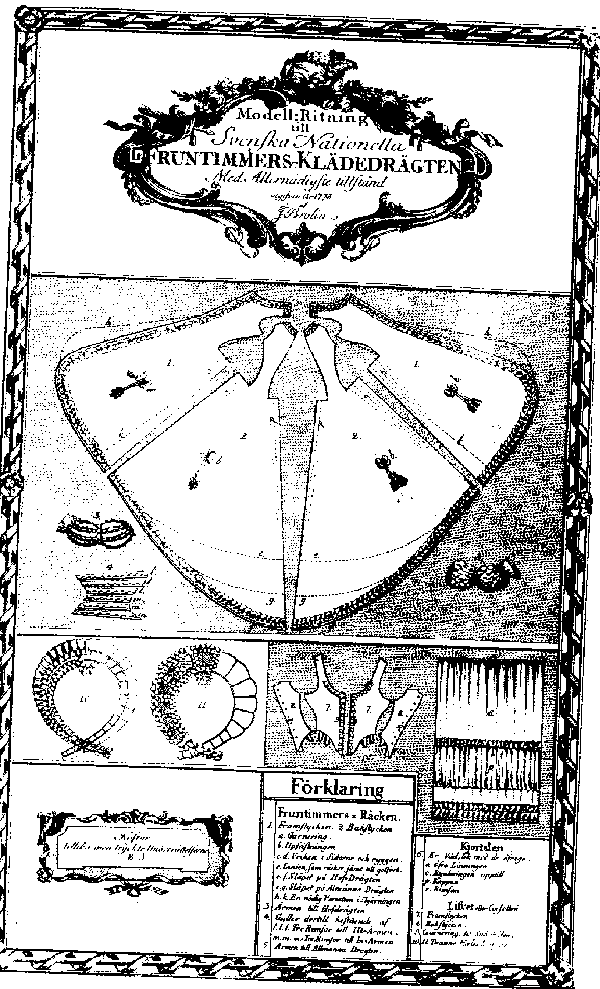
It was to be black, with red derails (or blue or yellow, if you belonged to the Queen or the King’s mother’s court). For gala it was at first red with white details, perhaps as a tribute to the Queen who was Danish, but it was very quickly changed to a white gown with blue details. What were considered so terribly old-fashioned were the high collar and the poufy sleeves. For ladies of the court the sleeves were white with a black lattice work, for other ladies the sleeves were worn in two poufs. Another difference between court gown and common gown was the train. It was longer on the court gown and was to be worn down- just hitched up at the front sides. The common gown was worn a la polonaise.
The cut of the women’s gown, very quickly adapted to fashion and the only remaining national gown is cut like an anglaise. It’s a common gown and was used for a wedding in 1780.

The high collar was quickly disregarded, as was the way of keeping the train down. What did remain, despite being so old-fashioned, were the latticed sleeves. Through the 19th century it was used with a black, contemporary gown, at court functions. And as late as the 1950’s, girl being presented at court wore it for their first time.
The petticoat
As I’ve mentioned, it was worn over pocket hoops, which seems to have been to only thing that the ladies of the court found positive about it. Understandable, as they were used of wearing the very formal robe de cour:
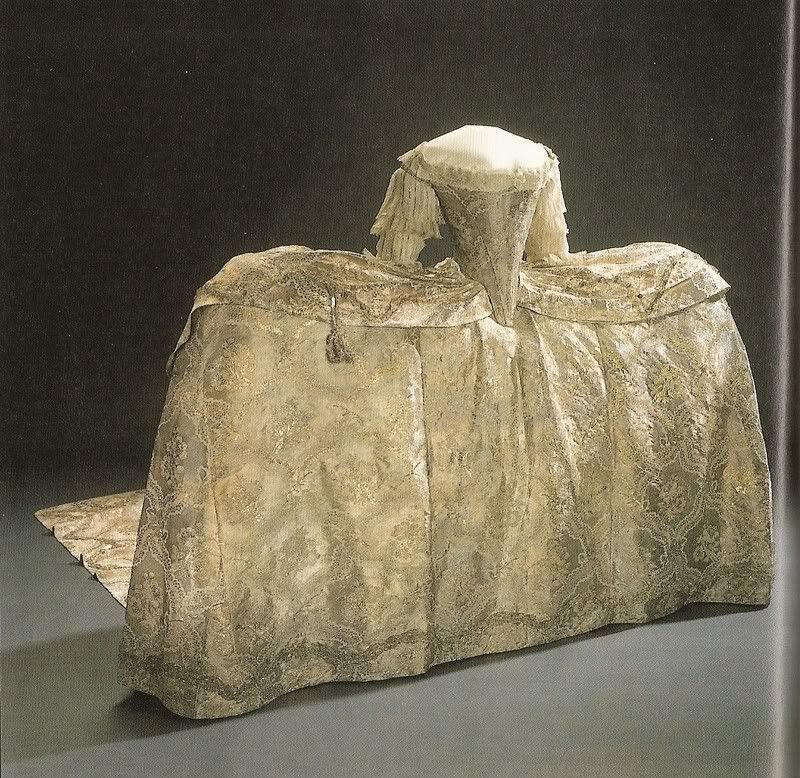
Bit of a difference, yes?
The national suit was much easier to wear, and not as elaborate embellished either. The petticoat simply has two rows of pleated self-fabric, one wide and one narrow. I’m making my gown out of black silk taffeta and I’m starting with the petticoat. The best written text about the extant gown is from the 1930’s and though it gives the pattern, it gives rather sparse details of the construction. It does say that the petticoat has openings in both sides and that it’s closed with hooks and eyes, but not if the closure is at the sides or in the back. So I’m making my petticoat in the same was I always do.
I cut two skirt lengths of the fabric and then I cut the top in an arc, so the centre front is lower then the top. I do this to accommodate for the hoop and if you look in Janet Arnold, for example, you can see that the petticoats there are longer over the hip. It’s important to do this adjustment at the top- if you lengthen the petticoat at the sides instead, it will drape all wrong. TA the top of the picture you can see one of the skirt lengths folded in half and cut. How much you cut depends on the size of the hoop. For my pocket hoop, a difference of 13 centimetres works well.

Underneath is the other length, pleated down. As you can see I’m in the process of basting the pleats after being pinned down. I do this before I sew the fabric pieces together, as it’s easier to handle less fabric.
I will sew the sides together, stopping some 15 centimetres from the top. I prefer to close my petticoats at the sides, so I will sew the front to one waistband and the back to another. Then I will sew ribbons at the sides, so I can tie the petticoat close.

